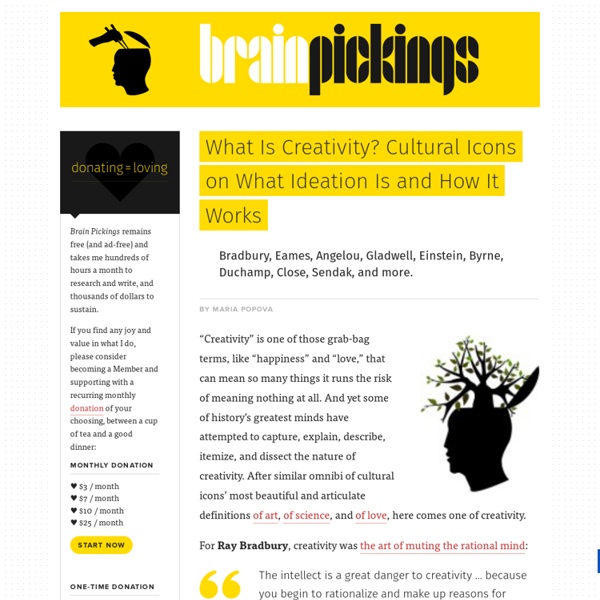



Creativity and Connectivity Key to Productive Workplace Kevin Kuske, Skipper and Chief Brand Anthropologist, turnstone , contributed this article to BusinessNewsDaily's Expert Voices: Op-Ed & Insights. Dare we finally say — 'the cubicle is dead?' Many have wanted to, but in the world of the entrepreneur it has finally met its match. Work is changing. The information age is giving away to what we like to call 'the networked age of distributed work'. Technology is fueling the ability to work anywhere. Co-creation is ascending as the new dominant model of innovation, creativity and differentiation. Coming together is important. As always, we see these societal, technological and cultural changes playing out faster in the world of entrepreneurs. It is also a critical part of how they fight for talent. As we studied highly effective and desirable entrepreneurial firms who are succeeding, we see them focusing on some common elements: Their personality comes through. This has led to the death of the working in a box.
Free Desk Here: Connecting Creatives with Free Desk Space One of the best things about freelancing is the freedom of mobility it allows. Many freelancers can work wherever there is wi-fi and a desk. As this mobile freelance community grows, so to do the methods of connecting its members to workspaces around the world. Free Desk Here is an initiative that connects creatives with studios that can offer them free desk space. An offshoot of Open Studio Club, a platform for artists and designers to find interesting and affordable studio space, Free Desk Here fosters a spirit of collaboration by providing creatives a space to work on their own projects and by bringing fresh energy into studios. There are no strings attached; no expectations of creatives doing work for the studio. Get involved: Find a Free Desk Offer a Free Desk Find out More About Free Desk Here
How To Tell If You're Creative (Hint: You Might Be A Bit Of A Jerk) Forget Myers-Briggs. A study out of BI Norwegian Business School has determined the signposts of a "creative" personality. Conducted by Professor Øyvind L. There are seven elements of a creative personality, so if you’re thinking about quitting your job as a lawyer or stock analyst to go on tour with your band or finally write that novel, you might want to consider the list below. You’re Creative If: Your Mind Has an Associative Orientation. You Hunger for Originality. You’re Highly Motivated. You’re Ambitious. You’re Flexible. You’re Emotionally Volatile. You’re a Pain in the Butt. Creativity Training Martinsen says that our personalities become fixed around the age of 25 or 30; if you’re inherently creative, you should know it--and display at least some of the seven tendencies-- by then. Environment can have a particularly strong influence on a person’s creative prowess. [Images Flickr users: Andy, Theilr, Patrick Denker, and Omer Wazir]
3 Paths Toward A More Creative Life Everyone can learn to be more creative, but to become very creative, I’ve come to believe you need to lead a creative life. In watching my best students, in examining the lives of successful entrepreneurs, and in seeing the process of the great Native American artists who I know, it is clear that how they live their daily lives is crucial to their success. I realize that it sounds very “zen-y” (which is OK by me), yet I come to this realization not through a search for spirituality or clarity but from simple observation. Creativity is in such demand today that when we apply for jobs, when we join organizations, or when we just meet other people, we are asked to present our creative selves. It’s a work in progress, of course, but here are three specific ways that can help you lead a creative life. 1. As important as it is for you to lead a hyper-connected and super-stimulating life as a creative person circa 2013, it is just as crucial for you to be self-reflective and mindful. 2. 3.
A More Resilient Species “A playful brain is a more adaptive brain,” writes ethologist Sergio Pellis in The Playful Brain: Venturing to the Limits of Neuroscience. In his studies, he found that play-deprived rats fared worse in stressful situations. In our own world filled with challenges ranging from cyber-warfare to infrastructure failure, could self-directed play be the best way to prepare ourselves to face them? In self-directed play, one structures and drives one’s own play. Self-directed play is experiential, voluntary, and guided by one’s curiosity. This is different from play that is guided by an adult or otherwise externally directed. A MacArthur Fellow told me that, when he was a teenager, his single mother would drop him off at an industrial supply store on Saturdays while she ran errands. Photo: Linda Stone. Play researchers’ findings indicate that self-directed play, for both children and adults, nourishes the human spirit and helps develop resilience, independence, and resourcefulness.
NZ Creativity | NZ Creativity The Science of Genius Identifying genius is a dicey venture. Consider, for example, this ranking of “The Top 10 Geniuses” I recently stumbled across on Listverse.com. From first to last place, here are the honorees: Johann Wolfgang von Goethe, Leonardo da Vinci, Emanuel Swedenborg, Gottfried Wilhelm von Leibniz, John Stuart Mill, Blaise Pascal, Ludwig Wittgenstein, Bobby Fischer, Galileo Galilei and Madame De Staël. What about Albert Einstein instead of Swedenborg? Select an option below: Customer Sign In *You must have purchased this issue or have a qualifying subscription to access this content
Creativity in Business Telesummit